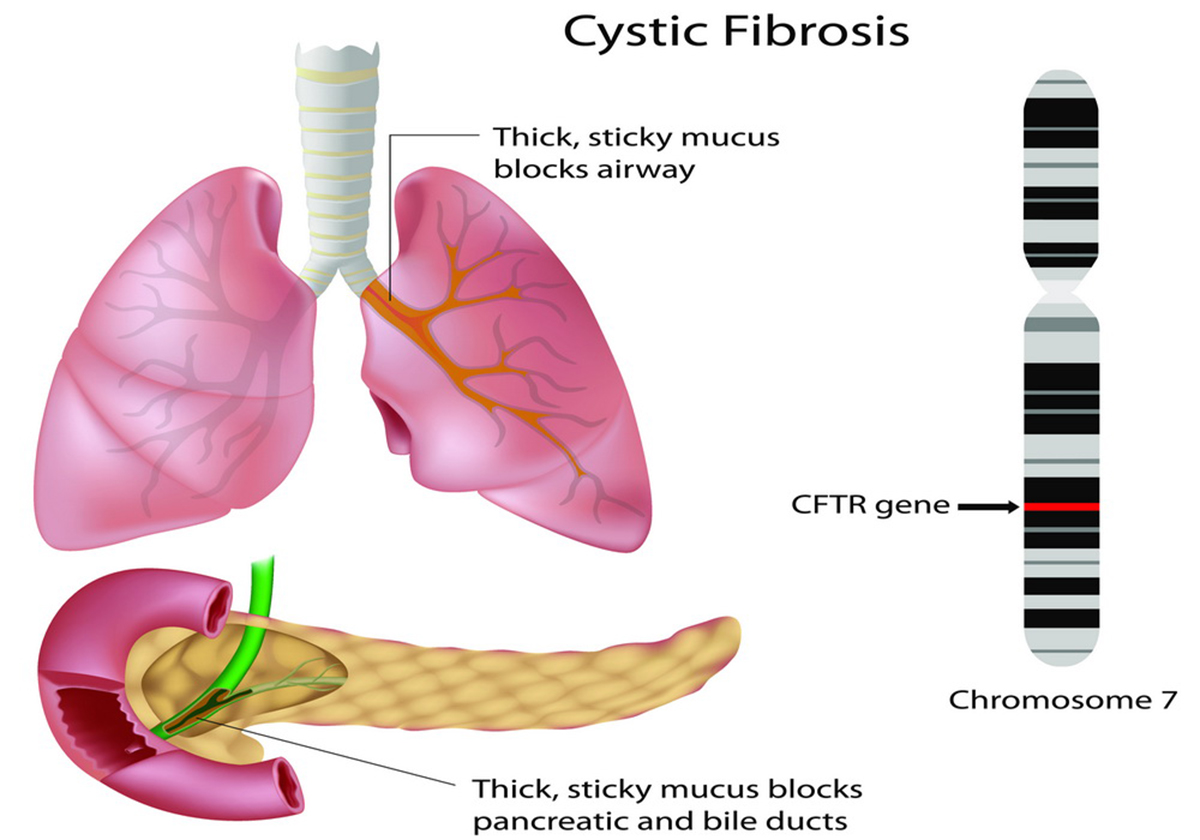Table of Contents
Cystic fibrosis (CF) is a genetic disease which is known to affect your lungs, liver, kidneys, and pancreas. This rare disease is the major cause of severe lung disease in children, occurring in over one thousand new cases each year. According to the Center for Disease Control and Prevention (CDC), over 30,000 people in the US suffer from cystic fibrosis.
Symptoms of cystic fibrosis may present as coughing mucus, difficulty breathing, lung infections, and constipation. Cystic fibrosis patients suffer from thick mucus which can block their airways. This can lead to infections, difficulty breathing, and problems digesting food properly.
Cystic Fibrosis doesn't go away and can make life very difficult. How can patients learn to live with the disease?
How Do You Get Cystic Fibrosis?
Cystic Fibrosis is an inherited, chronic disease.

Even then, not all of the kids may have the actual disease. Theoretically, if a couple of carriers had four children, one would develop the disease, two would be carriers only, and one would be completely unaffected.
The defective gene prompts the body to create extremely thick and sticky mucus. This mucus obstructs both the lungs and the pancreas, leading to breathing difficulties and trouble digesting food.
How is it Diagnosed?
The condition is usually diagnosed by the age of two. Despite a healthy appetite, children have poor growth and difficulty gaining weight. They also have very bulky stools due to their food not being well-digested. A persistent cough is accompanied by bouts of wheezing and shortness of breath. Parents also notice that their children's skin is very salty-tasting, a side effect of an abnormally high electrolyte concentration in their sweat.
This abnormality is the basis of the "gold standard" for cystic fibrosis testing: the sweat test.
A small electrode is placed on the arm along with a collection device. The area is wrapped in a dressing, then the electrode is used to stimulate the sweat glands. The sweat accumulates in the collection device and then the chloride level is tested. The higher the chloride the level, the more likely it is that the person has cystic fibrosis, with 60 mmol/L being the level at which a diagnosis is certain.
Genetic testing is also used, but mainly when the sweat test results are borderline or unclear. This is because there are over 1000 genetic mutations that can cause cystic fibrosis and most labs only test for the most common ones.
Can it be Cured?
No. It's a chronic condition and, sadly, often a fatal one. On the positive side, great strides have been taken in extending the life expectancy of people with cystic fibrosis.
Now, at least half live to their mid-30s and into their 40s. Some live even longer, as the severity of the disease can vary greatly.
The life expectancy of those diagnosed has steadily increased over time. Infants who are born with cystic fibrosis today may have even longer life spans thanks to new treatments that are now available. Many younger people are pursuing careers, marrying, and starting their own families. This was unimaginable, even a few decades ago.
Read More: Cystic Fibrosis: Causes & Risk factors
Organizations, such as the Cystic Fibrosis Foundation, work to fund research into new therapies and medications. The Cystic Fibrosis Foundation created its own specialty pharmacy to help patients get access to medication and therapy and provide support with insurance issues. They also seek out patients with cystic fibrosis who are willing to participate in clinical trials and help advance the science of therapeutic medications and therapies.
- Cystic fibrosis. (2001). In Taber's Cyclopedic Medical Dictionary (pp.502-503, Edition 19). Philadelphia, PA: F. A. Davis Company.
- Photo by shutterstock.com
- Photo courtesy of Yale Rosen by Flickr : www.flickr.com/photos/pulmonary_pathology/6838768118/


Your thoughts on this